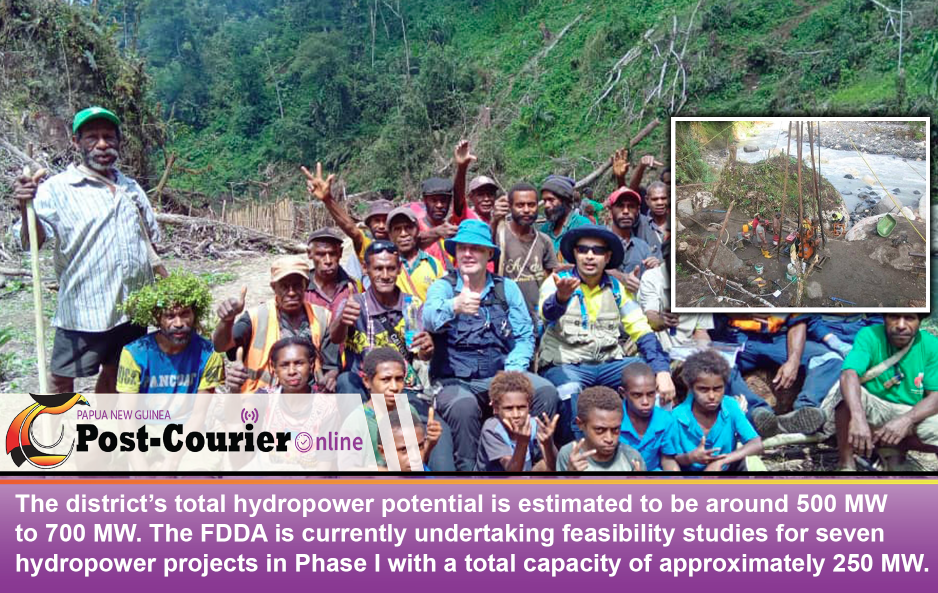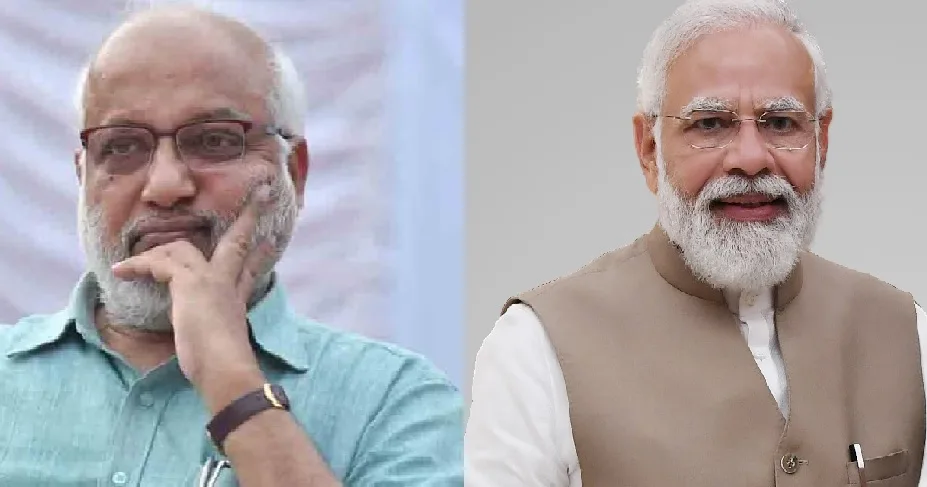By postcourieronline,The Finschhafen District
Copyright postcourier

The Finschhafen District Development Authority (FDDA) is pleased to announce significant progress across its major hydropower projects, which are central to powering the district’s future development and contributing to Papua New Guinea’s green energy transition.
The FDDA, in partnership with SMEC and other stakeholders, has undertaken extensive feasibility, design, and environmental studies on the Burum, Kuat, Mongi, and Mape river basins. Together, these projects form the backbone of a plan to position Finschhafen as a regional clean energy hub.
The district’s total hydropower potential is estimated to be around 500 MW to 700 MW. The FDDA is currently undertaking feasibility studies for seven hydropower projects in Phase I with a total capacity of approximately 250 MW.
The Feasibility Study for Burum II and Burum III (total capacity of 82 MW) has been completed and is ready for construction. Specifically, the Burum II Hydropower Project (20 MW) Feasibility Study is complete, and an Environmental Permit has been secured from CEPA, making the project ready for construction.
The Feasibility Study for Burum III & IV Hydropower Projects (62 MW) is also complete, the Environment and Social Impact Assessment Study is finished, and the Environment Permit application has been lodged with CEPA.
Ongoing feasibility studies show the Kuat I Hydropower Project (10 MW) is 90% complete, with the Draft report expected by the end of September 2025.
The Mongi IV Hydropower Project (approx. 70 MW) Feasibility Study is in progress and expected to be completed by March 2026. Field works, including headworks and SRT, are substantially complete, with Geotechnical Investigations and surface geological mapping ongoing.
For the Mape I Hydropower Project (10 MW), the Feasibility Study is ongoing, and the topographic survey is 100% complete. Geotechnical site investigation works, including drilling, are expected to start by mid-October 2025.
The Feasibility Study has started for the Mongi 3 Hydropower Project (40 MW to 50 MW), and the Feasibility Study for the Mongi 2 Hydropower Project (40 MW to 50 MW) will start by the end of September 2025.
Regarding small hydro projects (<10 MW), a pre-feasibility study identified nine potential mini-hydropower sites with a combined potential of 40 MW – 50 MW.
The FDDA has engaged SMEC to undertake a feasibility study for the Shong mini hydropower project (3 MW to 5 MW). This project is expected to replace costly fossil fuel-based generation and encourage SMEs.
The technical feasibility study for a transmission line from Finschhafen to Lae to evacuate 250 MW of power has been completed. The Burum-Lae Transmission Line Feasibility Study ensures the integration of the FDDA’s projects into the Ramu Grid.
This 132 kV double circuit line will have the capacity to evacuate 250 MW from Finschhafen to the Ramu grid.
These projects are strategically important as they will collectively deliver hundreds of megawatts of renewable hydropower, providing reliable and affordable electricity for households, industries, and the Finschhafen Integrated Special Economic Zone (FISEZ). Importantly, surplus power will flow into the Ramu Grid, strengthening energy security for the wider Morobe Province and beyond.
FDDA Chairman, Rainbo Paita, MP, stated, “Finschhafen is taking bold steps to secure its energy future. With Burum II ready for construction and other projects advancing steadily, we are building the foundation for industrial growth, job creation, and a cleaner, greener Papua New Guinea.
These hydropower projects will not only light up our communities but will also power industries, drive down costs, and attract major investments under the FISEZ initiative”. The Authority remains committed to delivering these transformative projects as part of the
Take Back PNG policy and the national vision for energy self-sufficiency and downstream industrialization.



